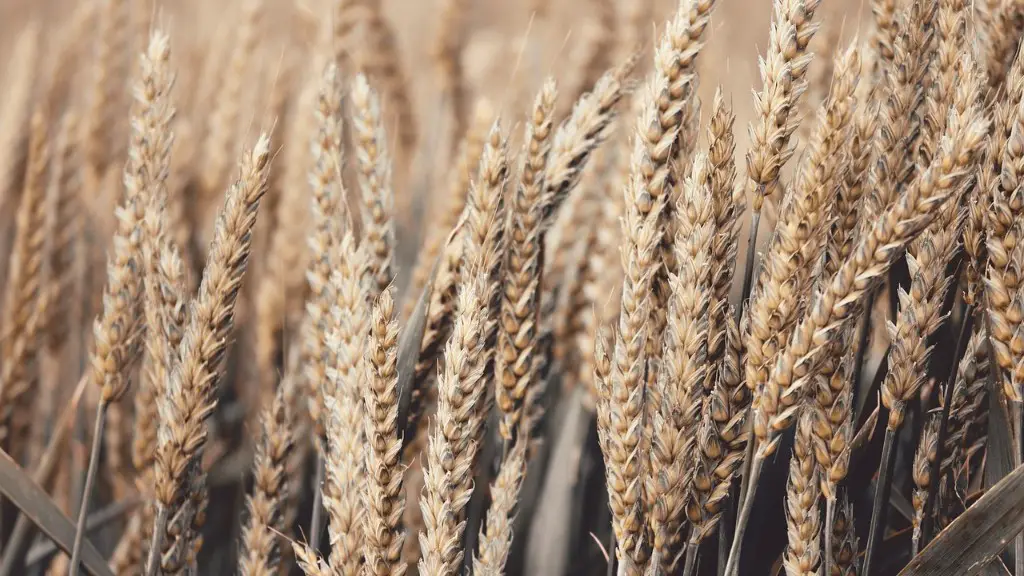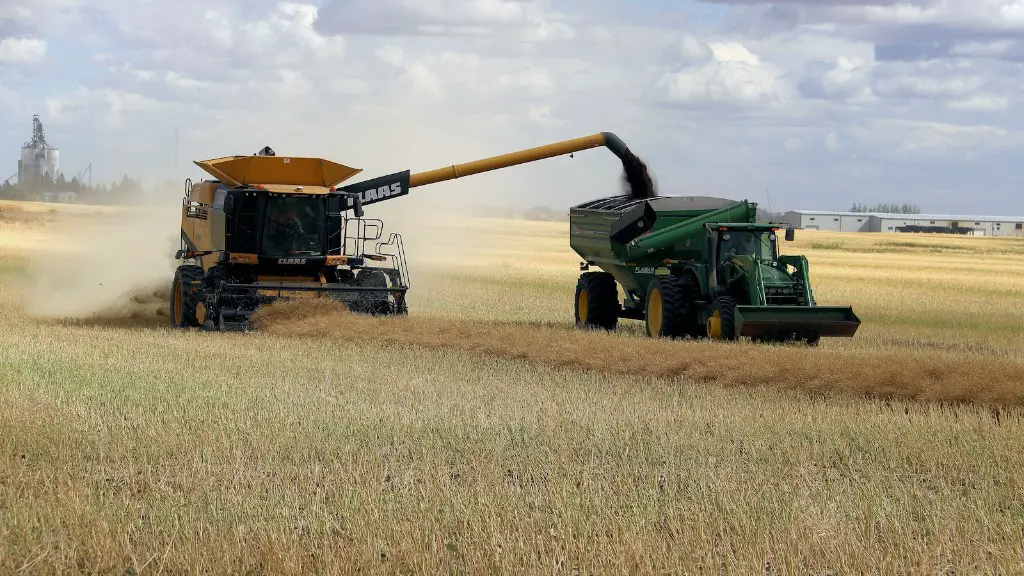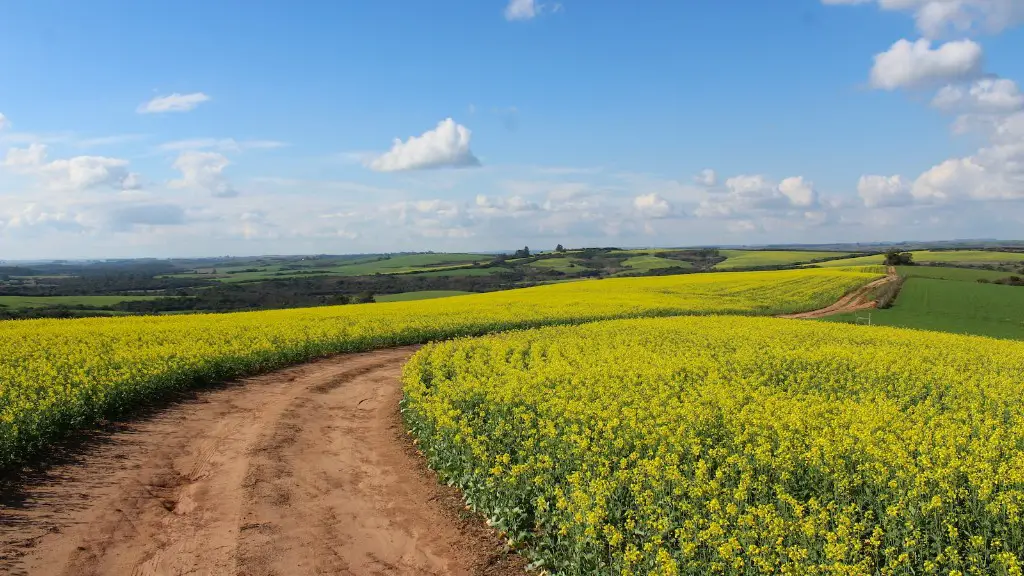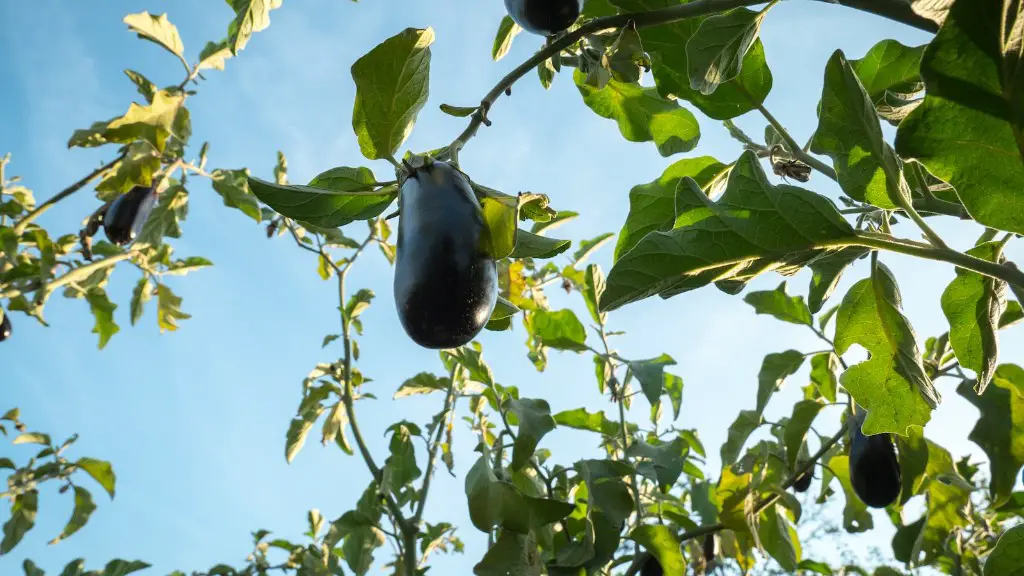Agriculture is the art and science of cultivating the land to produce crops and livestock. It is a vital component of human civilization, providing food, fuel, and fiber for people around the world.
Food security is the ability of people to access adequate, nutritious food. It is a complex problem that depends on many factors, including the availability of land and water, the efficiency of production and distribution systems, and people’s ability to purchase food.
Agriculture and food security are inextricably linked. Agriculture is the foundation of food security, since it is the primary source of food for the world’s population. But agriculture also depends on food security, since people need to be able to afford to buy food in order to maintain a thriving agricultural sector.
The challenge of feeding a growing world population is one of the most pressing issues of our time. With a finite amount of land and water available for agriculture, we must find ways to produce more food with fewer resources. At the same time, we must ensure that everyone has access to nutritious, affordable food. Agriculture and food security are essential pieces of the puzzle.
The United Nations’ Food and Agriculture Organization defines agriculture as “the art and science of producing crops and livestock from the natural resources of the earth.” Food security, on the other hand, is defined as “a situation in which all people have physical, social and economic access to sufficient, safe and nutritious food that meets their dietary needs and food preferences for an active and healthy life.”
In essence, then, agriculture is the process by which food is grown or raised, while food security is the guarantee of access to enough food to lead a healthy life. Both are critical to the well-being of individuals and communities around the world.
What do we mean by food security?
Food security is a global issue and one that needs to be addressed. The 1996 World Food Summit defined food security as when all people, at all times, have physical and economic access to sufficient safe and nutritious food. This is an important definition as it encompasses not just access to food, but also to safe and nutritious food. With over 7 billion people in the world, and a limited amount of resources, it is important that we address food security in a way that is sustainable and will allow all people to have access to food. There are many ways to address food security, and it is an issue that needs to be tackled from many different angles.
A person is food secure when they have reliable access to a sufficient quantity of affordable, nutritious food. Food insecurity, on the other hand, is characterized by uncertainty or lack of access to food.
According to the USDA, food security exists on a continuum. At one end of the spectrum is high food security, which means that households have consistent, year-round access to enough food for all members to lead active, healthy lives. At the other end is very low food security, which refers to households that experience reduced quality, variety, or desirability of diet, or reduced food intake, at least some time during the year.
There are many factors that can contribute to food insecurity, including poverty, limited access to healthy and affordable food, and natural disasters. In the United States, it is estimated that 11.8% of households are food insecure. This means that nearly 15 million households are struggling to put enough food on the table.
There are a number of ways to address food insecurity, including food assistance programs, community gardens, and education initiatives. It is important to note that food insecurity is a complex problem with no single solution.
Does agriculture increase food security
Food security is a global issue that affects people all over the world. A safe and reliable supply of food is essential for everyone, regardless of where they live. Agriculture is a critical part of ensuring food security, as it is responsible for producing the food that we eat. In developing countries, agriculture is even more important, as it is a major source of income for many people. Ensuring that the agricultural sector is functioning well is essential for keeping people fed and preventing poverty.
There are many programs that provide food to people in need without any type of commitment in return. These programs are important because they help to ensure that everyone has access to food, regardless of their circumstances. Some of these programs include soup kitchens, food banks, and school lunch programs. These programs provide a vital service to those in need and help to make sure that everyone has enough to eat.
What are the 4 elements of food security?
Food security is a term that is used to describe the availability of food and a person’s ability to access it. It is a global issue that has been the focus of many international organizations and governments. From this definition, four key dimensions of food security can be identified: availability, access, utilization, and stability.
Availability refers to the amount of food that is available in the market. This is often determined by factors such as production, import/export, and food assistance. Access is a related but distinct concept – it refers to a person’s ability to physically and economically access the food that is available. This can be affected by factors such as income, price, and location. Utilization refers to the way in which food is used once it is accessed. This includes factors such as nutrition, food safety, and food security. Stability is the final dimension of food security, and it refers to the availability of food over time. This can be affected by factors such as weather, climate change, and economic recession.
The four dimensions of food security are interrelated, and all must be considered in order to fully understand the concept of food security.
Food security is a term that is used to describe the availability of food and a person’s ability to access it. There are three components to food security: availability, access, and utilization/consumption.
Availability refers to the quantity of food that is available. This can be affected by factors such as weather, climate, and agricultural production.
Access refers to a person’s ability to obtain food. This can be affected by factors such as income, location, and transportation.
Utilization/consumption refers to the ability to consume and digest food. This can be affected by factors such as health, nutrition, and culture.
What is food security and how does it impact humans?
There is no one-size-fits-all definition of food security, as the needs of individuals and households vary greatly. However, true food security generally means that individuals have the resources they need to obtain a sufficient quality of nutritious food.
Access to food is affected by a myriad of physical, social and policy related factors. Factors such as pricing, household proximity to suppliers, and infrastructure all affect our access to food. In some cases, these factors may work together to create barriers to food access. For example, poor infrastructure may make it difficult for households to physically access food, while high prices may make it difficult for households to afford food.
Policy interventions aimed at improving food security must consider the complex interplay of factors that affect food access. Improving food security requires a multi-sectoral approach that takes into account the needs of vulnerable groups and the root causes of food insecurity.
The main threats to food security are: world population growth, the increase demand for food, food price, the disappearance of the variety of agricultural plant species, the increase in the area of scarcity water and the limitation of the availability of land, and the food losses and food waste.
Why is agriculture important to food security
Agriculture is an important source of pro-poor growth in developing countries with large rural populations. Meeting future food demand in a sustainable way will require advances in productivity, market systems, natural resource management and governance. To support pro-poor growth in agriculture, it is important to invest in smallholder farmers, rural infrastructure and services, and agricultural research and extension.
Agriculture provides the largest share of food supplies and ensures a critical number of ecosystem services (eg, food provisioning). Therefore, agriculture is vital for food security and supports the Sustainable Development Goal (SDG) 2 (SDG 2 – zero hunger) as others SDG’s.
How does agriculture affect food insecurity?
There are a number of agricultural factors that contribute to food insecurity. One of the most important is land size. Smaller farms are often less productive and more vulnerable to pests and diseases. In addition, the diversity of crops and livestock is important. Farms that only grow one or two crops are more likely to experience shortages if one of those crops fails. Finally, the yield of crops is also a factor. Rice and vanilla are two of the most important crops in the world, and the yield of both has been increasing in recent years. This has helped to offset the impact of other agricultural problems and has contributed to decreased food insecurity in many parts of the world.
Food security is a term which is used to refer to the continuous availability of food as well as its accessibility in terms of quality and quantity. There are three pillars of food security which are physical and economic access to food as well as purchasing power. Each of these pillars is equally important in order to ensure food security.
Physical access to food refers to the availability of food. It is important that there is enough food available to meet the needs of the population. This can be achieved through food production, imports, and food assistance programs.
Economic access to food refers to the ability of individuals to purchase food. This is determined by a number of factors including income, food prices, and access to financial services.
Purchasing power refers to the ability of individuals to purchase food in quantities that meet their needs. This is determined by a number of factors including income, food prices, and access to financial services.
In order to ensure food security, it is important that all three pillars are strong. This can be achieved through policies and programs that support each pillar.
What is the most important food security
Food security exists when all people, at all times, have physical and economic access to sufficient, safe and nutritious food that meets their dietary needs and food preferences for an active and healthy life.
The availability, access and consumption of nutritionally adequate food are the three pillars on which the concept of food security is based. All three must be met in order for a person or household to be food secure.
Poor nutrition is one of the greatest challenges facing the world today. In order to ensure food security for all, we must improve access to nutritious foods and increase the availability of nutrient-rich foods.
Food security is a term that is often used but seldom defined. There are four interrelated elements to food security: availability, access, utilisation and stability. Food security exists when all people at all times have both physical and economic access to sufficient, safe and nutritious food to meet their dietary needs and food preferences for an active, healthy life.
Availability: refers to the quantity, variety and quality of food available in a given area. It is determined by food production and imports, as well as by stock levels.
Access: is about having the economic resources (income, entitlements, etc.) to acquire the food needed for a healthy diet. It includes bothdirect and indirect access. Direct access is when people have the money to buy food, or the land and other resources to produce their own food. Indirect access is when people do not have the resources to buy or produce food, but may be able to acquire it through other means, such as receiving food assistance or trading for other goods.
Utilisation: is about making sure that the food people eat is nutritious and safe, and that it is prepared and consumed in a way that maximises its nutritional value. This includes things like storage, cooking and hygiene practices, as well
How can we improve food security?
There is no single solution to improving food security. A variety of efforts are needed to address the problem from multiple angles. One important focus is on improving incomes, employment and enterprise opportunities for the poor. This can help to ensure that people have the resources they need to purchase food and that food producers have the necessary buyers for their products. Another key issue is gender equality. Women often bear the brunt of the burden when it comes to feeding their families, and they often lack the same resources and opportunities as men. Reducing the negative impacts of climate change and environmental degradation is also crucial. This includes supporting sustainable agriculture practices that help to preserve the environment and make it more resilient to extreme weather events.
Availability and access to food are important determinants of food security. Food security exists when all people, at all times, have physical and economic access to sufficient, safe and nutritious food that meets their dietary needs and food preferences for an active and healthy life.
There are many factors that contribute to food security, including availability of food, access to food, and the stability of the food supply. Availability refers to the physical supply of food, while access includes the ability to acquire food. The stability of the food supply is also important, as food insecurity can result from sudden disruptions to the food supply, such as natural disasters or economic crises.
Improving food security requires efforts to improve all of these factors. For example, increasing food production can help to improve availability, while improving incomes and access to financial services can help to improve access.
What are the 6 factors that contribute to food security
The food security of many people across countries is affected by several factors. Among these are differences in economic standards, climate change and global warming, scarcity of land for farming, technological barriers, and inadequate supply of water for irrigation. Poverty is another important factor that contributes to food insecurity.
Agriculture is vital for the economic development of a country. It is a major source of livelihood for the people and helps to enhance the productivity and consecutively the production of food. It can assist in providing opportunities for income generation. And, it generally provides improvement of nutritional advice through home economics programmes and enhances the quality of rural life by way of community development. These are some of the reasons why agriculture is important.
Final Words
Agriculture is the science and art of cultivating plants and livestock for human use. Food security is the state of having reliable access to a sufficient quantity of affordable, nutritious food.
The world population is projected to exceed 9 billion by 2050, which will put unprecedented pressure on global food security. Agriculture is the cultivation of land and breeding of animals and plants to provide food, fiber, medicinal plants and other products to sustain and enhance human life. Intensification of agriculture has been the main strategy to meet the growing demand for food, but there are limits to how much land and water resources can be used for this purpose. Improving food security therefore requires a more holistic approach that includes not only boosting agricultural production, but also reducing wastage, promoting equitable access to food, and supporting small-scale farmers.





